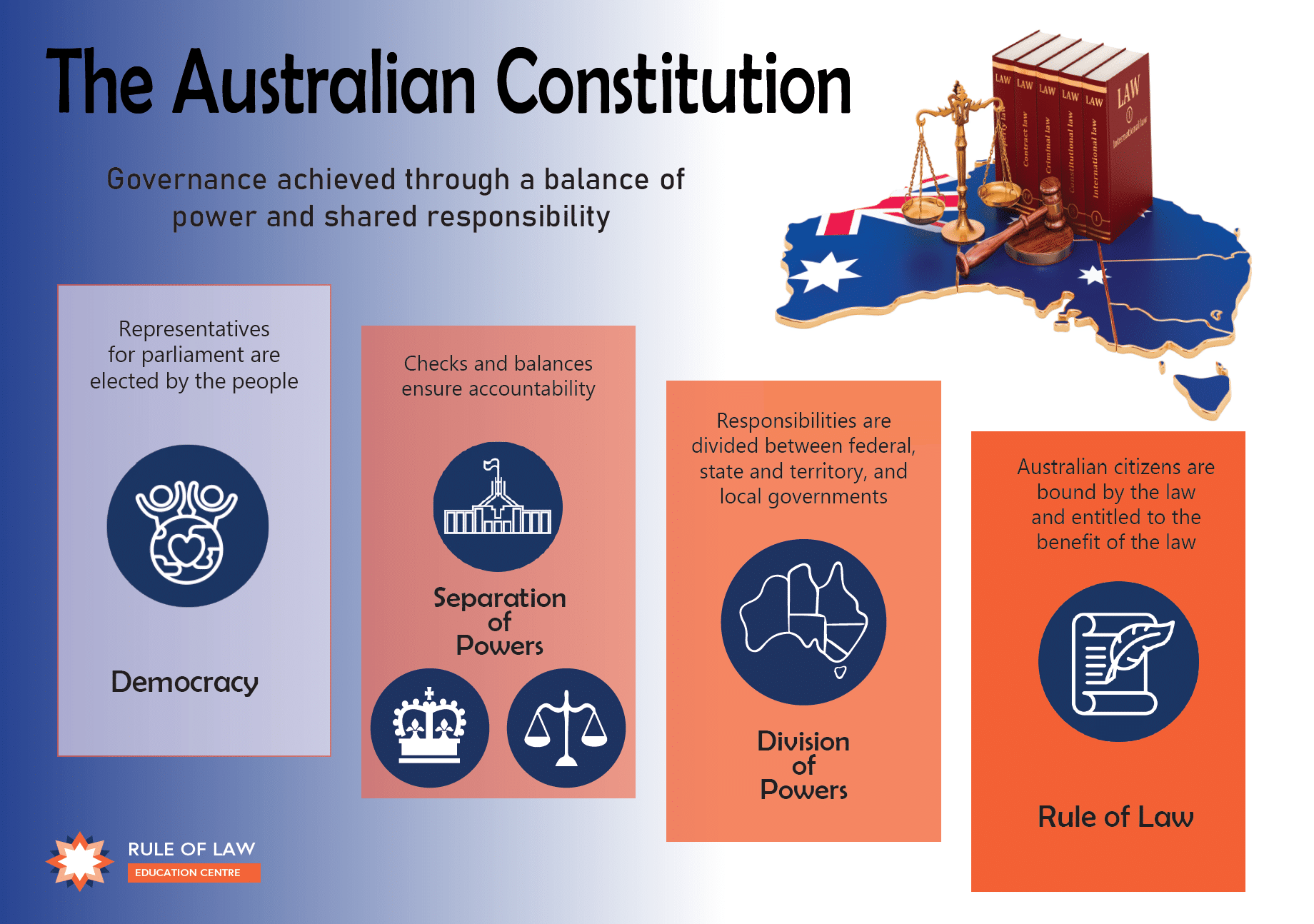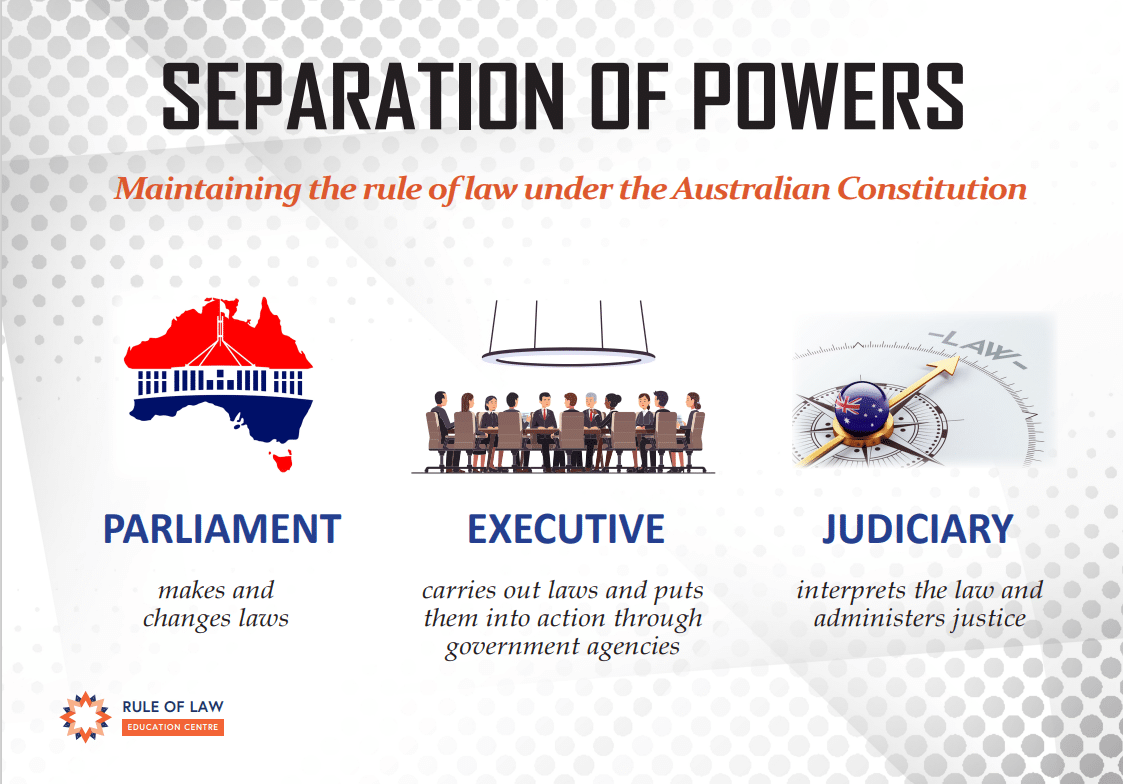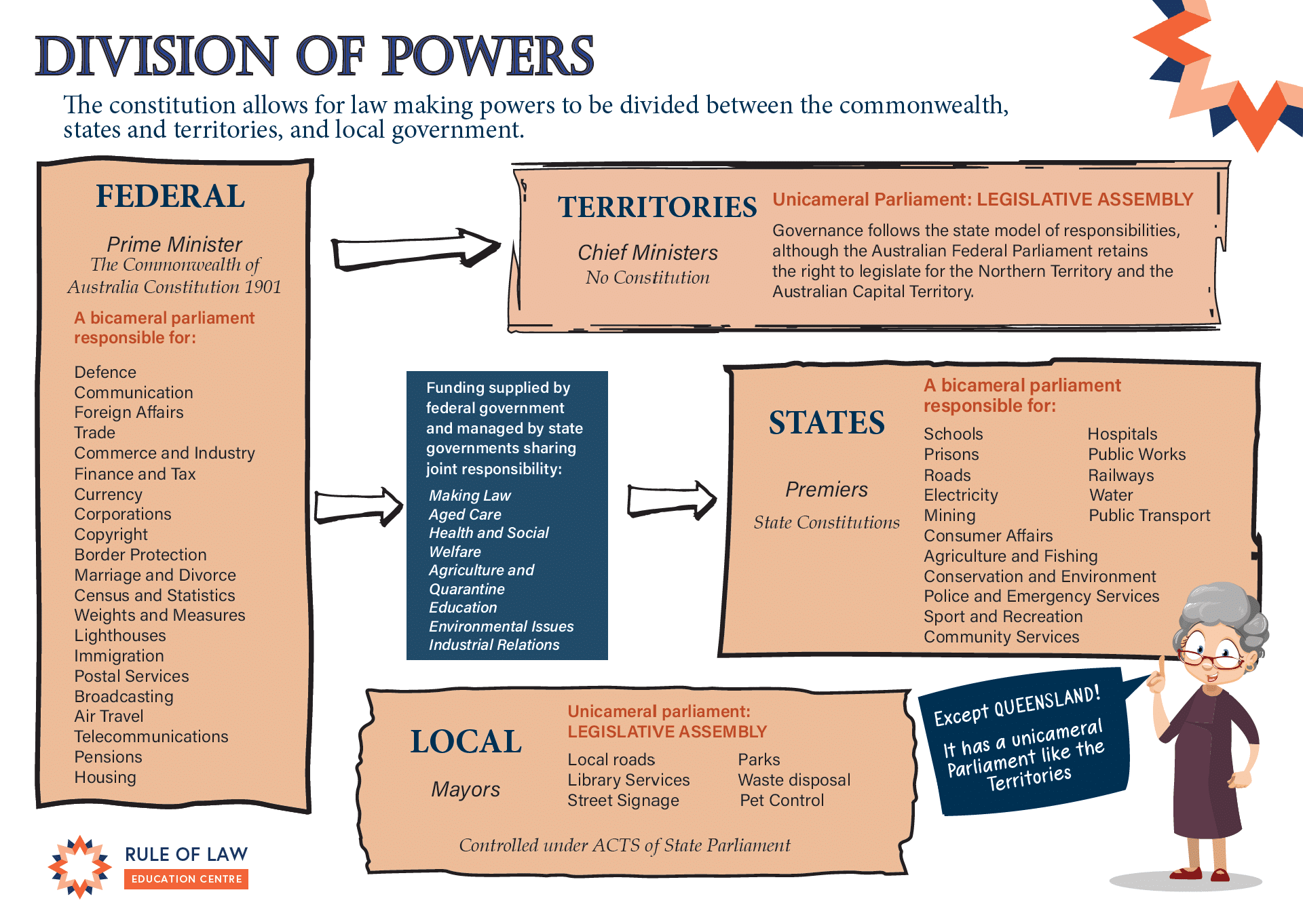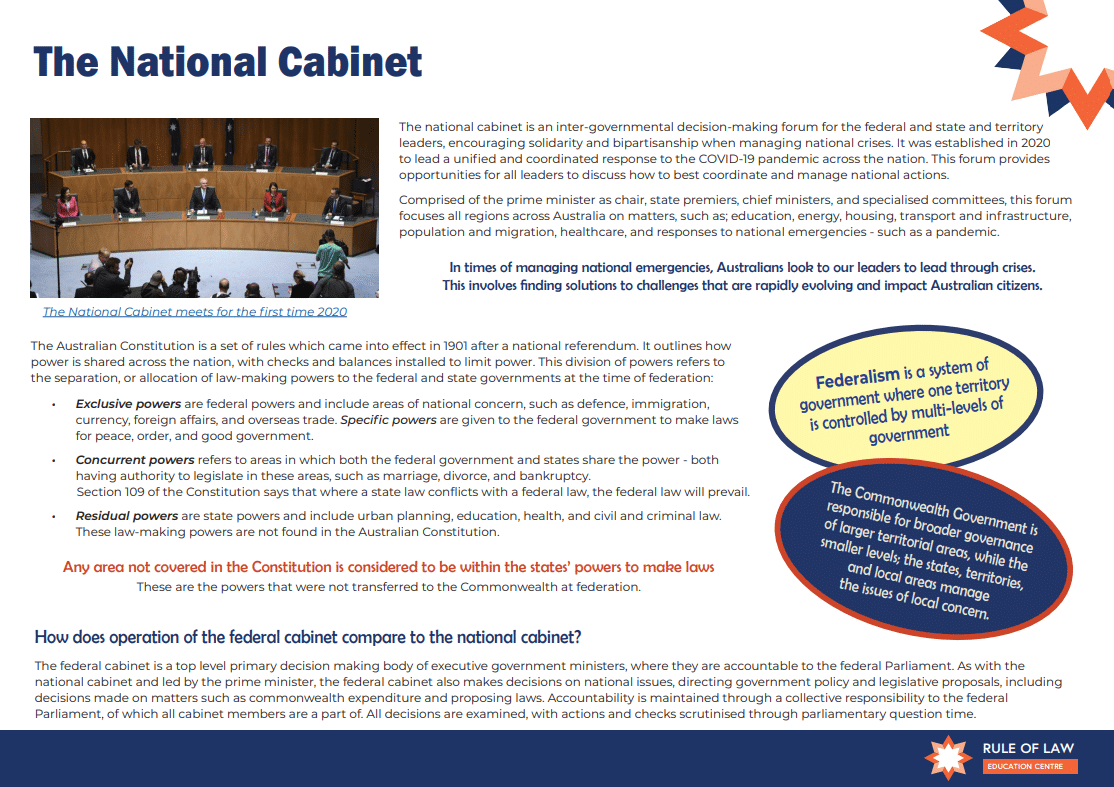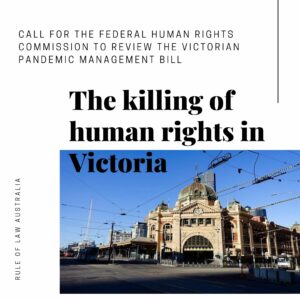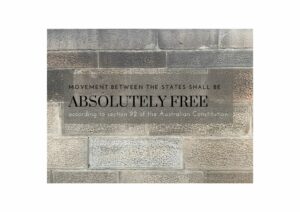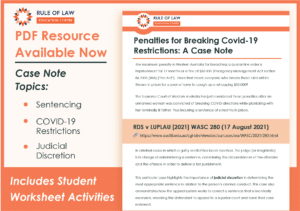Does the Constitution allow the States to close their borders?
The short answer is no. The Constitution says that movement between the States shall be absolutely free.
However, when the High Court has looked at s92 of the Constitution, they have said there are times when the States can shut their borders and not breach the Constitution so long as the closures are proportionate and for a legitimate purpose.
Under what laws can the States close their borders?

Each State also has their own legislation that gives them additional special powers to deal with emergencies such as controlling the spread of COVID-19.
For example, New South Wales has the Public Health Act 2010 (NSW), that enables the Minister to take actions they consider necessary to deal with the risk and possible consequences of a public health outbreak.
Similarly, under the Western Australian Emergency Management Act 2005 (WA) the movement of people, animals and vehicles can be prohibited in an “emergency area” which allows a border to be closed to all persons from any place that might pose a risk.
What makes border closures tricky is that each State has different laws and there does not appear to be any consistent, clear or transparent guides to help the States manage the public health risk in a unified manner.
What does the Constitution have to do with State Border Closures?
The Constitution is a document that united the six colonies (states) into one body, Australia.
It is an agreement made by the people of each State, after holding a referendum, that details how they would be united to form the Commonwealth of Australia. The first line of the Constitution says:
the people of New South Wales, Victoria, South Australia, Queensland, Tasmania … and Western Australia, have agree thereto .. be united in a Federal Commonwealth under the name of the Commonwealth of Australia
The Constitution outlines how this “new” nation would be governed, how power was to be shared between the States and Commonwealth and how there would be checks and balances to limit those in power. Importantly, writers of the Constitution wanted a unified nation, with people moving freely between the states.
Section 92 of the Constitution states (emphasis added):
On the imposition of uniform duties of customs, trade, commerce, and intercourse among the States, whether by means of internal carriage or ocean navigation, shall be absolutely free.
Whilst the Constitution was being debated during the 1890’s, Sir Henry Parkes outlined what the intention of this clause was:
“Australia shall be free- free on borders, free everywhere– in its trade and intercourse between its own people; that there shall be no impediment of any kind – that there shall be no barrier of any kind between one section of the Australian people and another; but that the trade and general communication of these people shall flow on from one end of the continent to the other, with no one to stay its progress or to call it to account”
To learn more about the Constitution, click on the below images:
Although section 92 sounds like there can be no restrictions put on movement between the States, the High Court has ruled there are some limits to this. See the below analysis of the Palmer v WA.
How does the high vaccination rate impact Border Closures?
Before vaccines were developed, the constitutional legitimacy of state border closures was clear. The best defence against the pandemic at that time was to curtail interstate movement and isolate.
That was recognised by the High Court in February when it explained why it unanimously rejected Clive Palmer’s attempt to force WA to open its border.
Chief Justice Susan Kiefel and Justice Pat Keane endorsed WA’s position with a statement that will never be repeated: “There is no known vaccine, and no treatment presently available to mitigate the risks of severe medical outcomes or mortality for a person who contracts Covid-19.”
At that moment, McGowan’s border closure did not infringe section 92 of the Constitution, which says trade, commerce and intercourse between the states shall be absolutely free.
But that moment has passed. Anyone who reads the judgment in Palmer’s case will see that it provides the framework to strike down future border closures.
That ruling was based on a preliminary decision of the Federal Court that outlined a method of risk assessment that will make border closures a constitutionally dubious way of fighting Covid once most people are vaccinated.
A fracture in the federation received the court’s approval. That dreadful moment came about because the judges considered WA’s closed border to be a proportionate and necessary response to Covid’s deadly threat.
At the time, they had a point. There was no vaccine.
But now most of the nation is double-jabbed. When vaccination rates hit 80 per cent, it will be clear that Covid-driven border closures have served their purpose. We have moved on – walls between the states are imposing more costs than benefits.
That is when the premiers of Western Australia and Queensland will need to accept that the goal of protecting people from the pandemic is better achieved by vaccines.
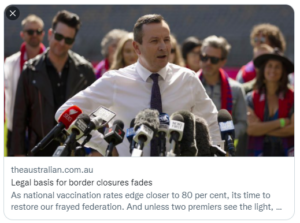
The vaccine, rather than any new approach to jurisprudence, is likely to finally breathe life into the Constitutional guarantee that trade, commerce and intercourse between the states shall be absolutely free.
This was recognised on Tuesday when Amanda Stoker, the Assistant Minister to the Attorney-General, presented a paper to the Samuel Griffith Society with a title that evokes the spirit of Ronald Reagan: “Mr McGowan, tear down this wall!: Section 92 after Palmer v Western Australia” (see video below)
What the Australian High Court has said about Border Closures
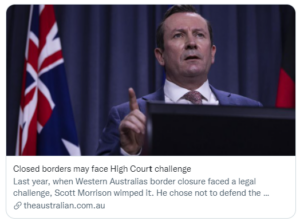
Many people have come to the High Court to settle disputes about s92 to resolve whether their trade or movement into a State can be stopped.
Clive Palmer Challenged the WA Border Closures
In 2020, Clive Palmer went to the High Court of Australia to see whether the border closures by the Western Australian government in response to COVID-19 were in breach of section 92 of the Constitution and therefore unlawful.
The High Court in their judgment Palmer v Western Australia [2021] HCA 5 stated that the Western Australian border closures were indeed lawful under s92 of the Constitution. Based upon this judgement, the States can effectively shut their borders if they can show good reasons that the border closures are proportionate and for a legitimate purpose.
For a more detailed analysis of the Palmer case, read the article in the Australian by Chris Merritt entitled “High Court ruling on Clive Palmer’s border challenge is a step in the right direction.”
What does the Palmer Case mean for future challenges to border closures?
The WA border closures that were considered during the Palmer case were “hard border” closures. This meant that the WA border was closed to all persons outside of WA unless they fell into the small category of “exempt traveller.”
When considering effective alternatives rather than hard border closures, such as allowing persons to enter WA from States where COVID-19 was largely under control, the High Court stated that:
“because of the uncertainties about the level of risk and the severe, or even catastrophic, outcomes which might result from community transmission, a precautionary approach should be adopted…. These findings leave little room for debate about effective alternatives …. the defendant’s submission that there is no effective alternative to a general restriction on entry must be accepted”.
In response to this statement, legal academic, Professor Anthony Gray of the University of Southern Queensland in an interview with Chris Merritt stated:
“I respectfully, fundamentally, disagree with that. There were a multitude of other options available to the WA government short of the hard lockdown. They could have applied the border closure to Victoria alone, they could have insisted on a fourteen day quarantine, they could have insisted that people have a COVID test before crossing the border”
Interestingly in April 2020, Professor Stellios from ANU College of Law in an article by ABC entitled “Is it illegal under the Constitution for a State to close its borders to other Australians?” stated that:
“.. it’s likely that preventing the spread of COVID-19 would count as a legitimate reason for regulating the free movement of people and, depending on the science of how it spreads, perhaps interstate trade and commerce … The fact that the states are taking different measures might create some difficulties for the states that take more stringent approaches. If lesser measures can achieve the same risk prevention as the more stringent measures (or if the impact between them is minimal), then the more stringent measures might be seen to be unreasonably burdensome and, thus in breach of section 92 of the Constitution.”
George Williams wrote in the Australian on 3 September 2021 ‘Federal parliament has the power to rule on borders,’
“The High Court should be the last resort to resolving this issue. Attention should instead focus on the federal parliament. Reopening our borders requires weighing up the public health, economic, social and political considerations. This is best undertaken by our elected representatives from across the nation. They can go much further than determining whether border closures breach the Constitution. They can set down specific rules for hot spots and to cater for vulnerable people and children, and ensure that borders are not opened prematurely. … Further legislation can be passed under parliament’s quarantine or other powers in the Constitution to mandate the national plan as a legally enforceable standard. These national rules can override state laws.”
Are there principles that need to be considered when States apply their emergency powers?
Laws must be clear, transparent and predictable.
In times of emergency, the Courts and every Australian citizen has a role in ensuring that emergency declarations are carefully considered and they are clear, transparent and predictable.
They also must be proportionate to balance the protection and public health of our nation with our individual rights and freedoms to move freely around Australia to do business, holiday, and visit friends and family.
To read further articles click on the below links:
Further reading on State Border Closures and the Constitution
Chris Merritt in the Australian newspaper on 26 August 2021 ‘Vaccine progress means closed borders may face High Court Challenge‘
Chris Merritt in the Australian newspaper on 15 October 2021 ‘Legal Basis for Border Closure’
Samuel Griffith Society, Zoom Discussion with Senator the Hon Amanda Stoker on 12 October 2021
tp://www.cefa.org.au/ccf/reasonable-and-appropriate-restrictions-our-rights-cross-interstate-borders
https://lsj.com.au/articles/the-constitutional-challenge-to-end-the-covid-border-closures/
https://www.aph.gov.au/Parliamentary_Business/Committees/Senate/Scrutiny_of_Delegated_Legislation
LB Crawford, ‘The Rule of Law in the Age of Statutes’ (2020) 48(2) Federal Law Review 159.

